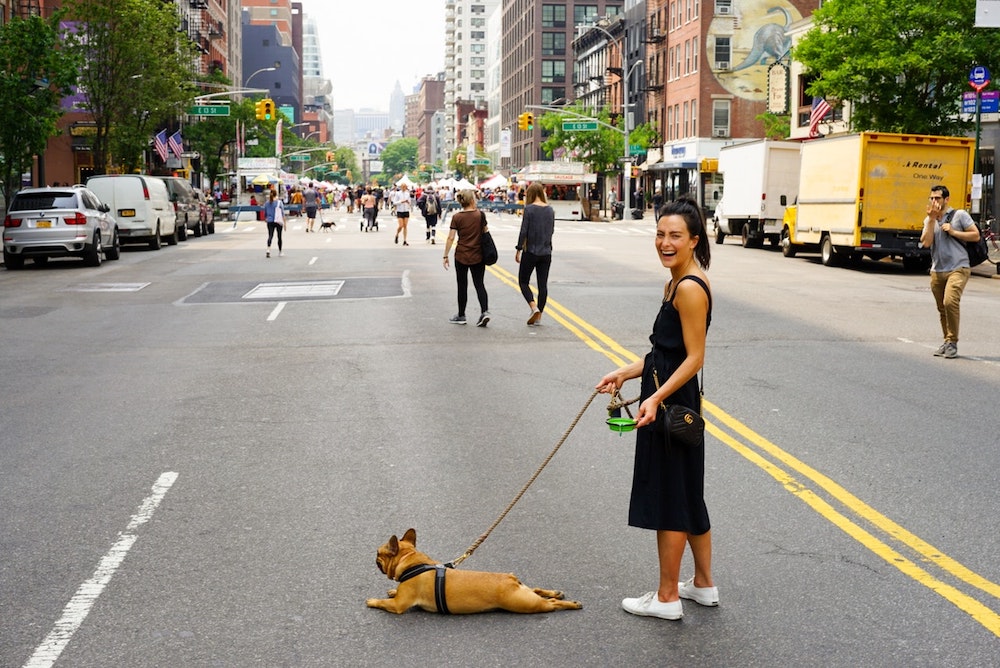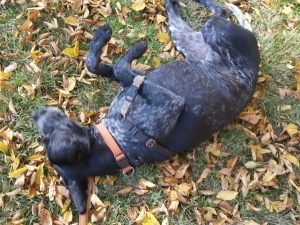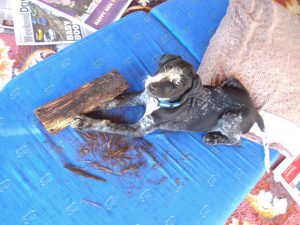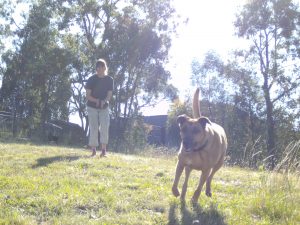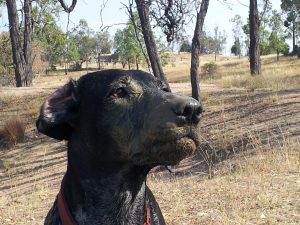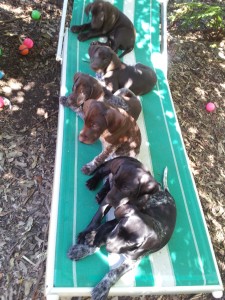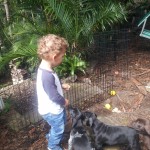Why are we getting dogs when we try to prevent them from doing what dogs normally do more often than not. And why do we find a lot of things real dogs do inappropriate or even offensive?
Sometimes it seems we consider a lot of the things a dog does as gross, dirty, annoying, or done on purpose to make the humans feel bad.
Yes puppies mouth, soil the house, don’t want to be alone, eat everything in sight, run away, roll in smelly stuff, chase moving things, growl, smell other dogs bums and bite or mouth. They are dogs and that is what they do – yes even a puggles or an oodles. Despite being called designer dogs they are still dogs. And don’t be fooled by the cute name, chances are high that these puppies were bred in a puppy mill environment. This means these dogs come (in addition to normal dog behaviour) with their own set of even more problematic issues.
Labelling normal dog behaviours like barking, digging, jumping up, chasing, growling and many more ‘abnormal’ is one of the problems we see more often in our classes and consultation. It is not the dog who has a problem but the human who has unrealistic expectations, or got fooled by cute puppy pictures on social media and the glorification of puppy hood.
Our expectations are extremely high, we expect them to fit in with our busy schedule, be active when we want them to be, calm on our terms, eat when we are ready, play when we feel like it and go to the coffee shop because we think it is fun – dogs mostly think coffee shops are rather boring.
We also seem to forget what the needs of a ‘normal’ dog are. We deprive them of puppy play because we neither have time nor the inclination to make an effort. Play has its purpose and is important for a well balanced dog. Play matters and if someone tells you that play does not, you might want to consider their agenda. Puppy play is not provided in some preschools because the business books too many puppies into the class, or the space is too small, or there is a lack of knowledge of puppy body language and skills to manage puppy play. Dogs and certainly puppies do want to associate and spend some time with their own species and I do think it is necessary for their well-being. This is why Goodog limits the number of dogs in our courses, we consider the size of the space available versus the number of dogs, all my trainers are qualified and teach my lesson plan and we understand dog body language (yes dogs speak to us in other ways).
I agree that the dog park is fraught with danger and not suitable for every dog too, but most dogs love to have some canine friends. If the dog is not suitable for the dog park, then socialisation can be provided with a group of canine friends they meet on a regular basis, or a good day care or dog walker matching appropriate dogs. To have a dog spending most of their life in the backyard and on the leash does not cater to their needs. They need to run, sniff, play, work and have some fun.
We also expect them to behave like ‘fury humans’, dress them up (I am not talking about a coat when it is cold or bucketing down) but dressing up for no other reason than to entertain us.
We get them as companions but leave them home alone for the best part of the day and when we come home expect them to be calm. Dogs are social animals and need company, they are not made to be home alone all day, every day. They also need to stretch their legs and run, especially teenage dogs. However, they spend most of their days inside, the yard or on the leash.
We control every move they make, they are told what to eat, when to sleep, where to walk with no choice in any thing that is important to them.
Is the only purpose of a dog to ‘serve’ us? To muddle the waters even more we read books or see films like A Dog’s Purpose which portraits dogs as these selfless, altruistic, ‘do-good’ beings whose only purpose is to help us humans. While I will not go into the controversy surrounding the film (plus I only read the book), the way this unfolded could be an indication of a rather selfish and human centric approach to how dogs are treated. Or as this review says, the purpose of a dog is to entertain us, or else we will use force.
There are many reasons why we add a dog to our family: they are very cute, we crave company, they are good for our health, the neighbours just got one, we want a running companion, the children have been wanting one forever, to name a few. But rarely do we consider what we can give this dog to lead a fulfilling life.
Dogs are not selfless or altruistic, they do whatever works. While we can be pretty sure that they do love us, they are not saving others, winning competitions, being great companions, or behaving at the coffee shop just because they love us but because there is something in it for them. This can be BBQ chicken, cheese, hot dogs, a ball, cuddles or whatever else makes them tick.
But even so what they can do for us should not be the only question. I think we should redefine our relationship with our dogs and see it from their perspective, too. To have a happy, well adjusted dog we need to provide suitable outlets for being a dog. This means create time and places for them to meet and interact with other dogs (assuming they like dogs), give them choices on where to go, what to eat and where to rest. Let them dig at least in some parts of the yard, occasionally sniff other dogs’ rear end, have the ‘zoomies’ and give them lots of things to chew.
It also means that we need to have realistic expectations. A dog who just spent hours home alone does not want to be calm and cuddle when you get home, most likely they want to play, run and go out. As in any relationship, it goes both ways and a dog is not an accessory! Make sure you have the time for a dog before you get that cute puppy. Dogs are great companion but we need to give something back and treat them as real dogs.
Maybe the purpose of a dog is being a dog?
